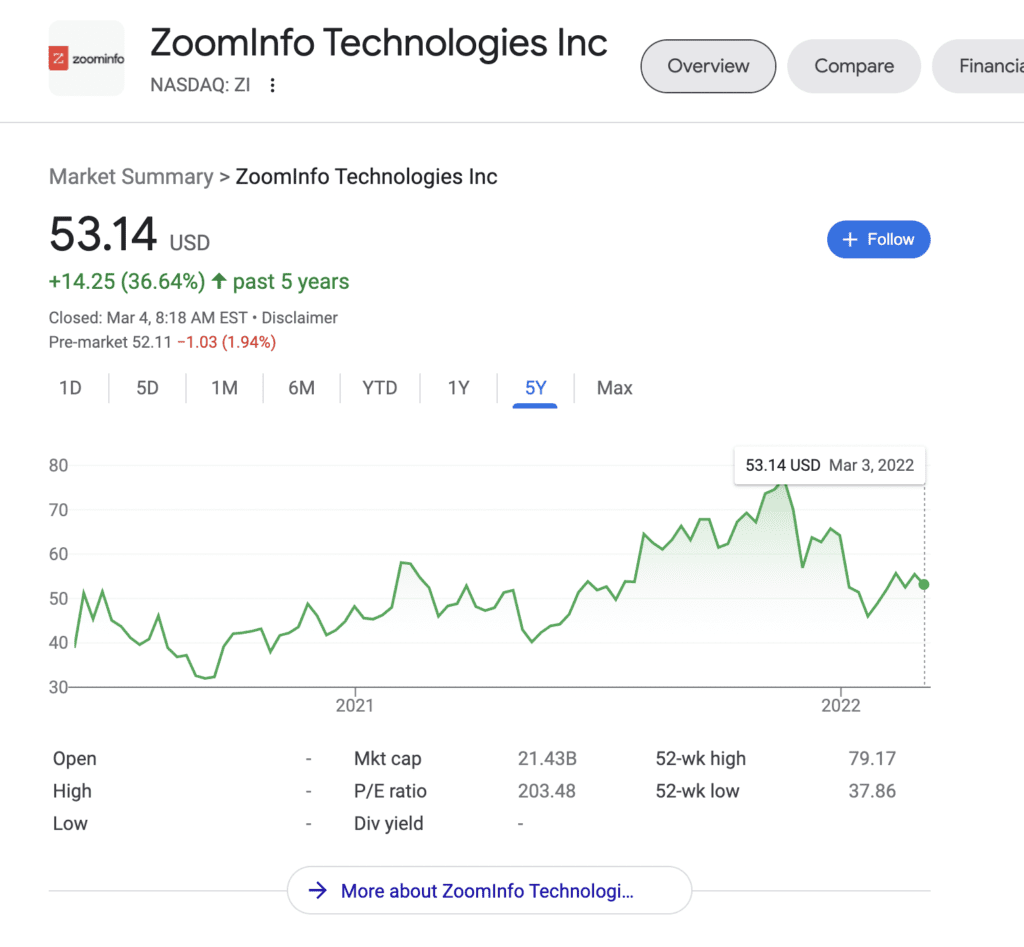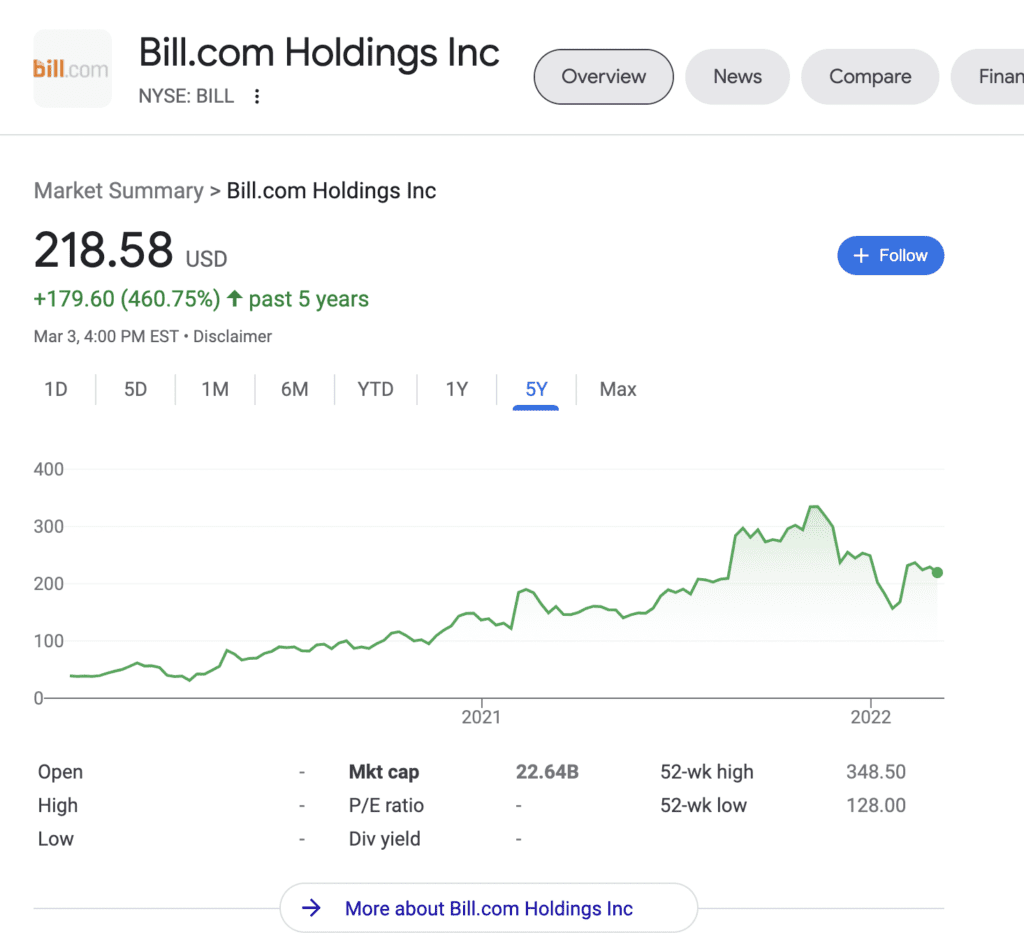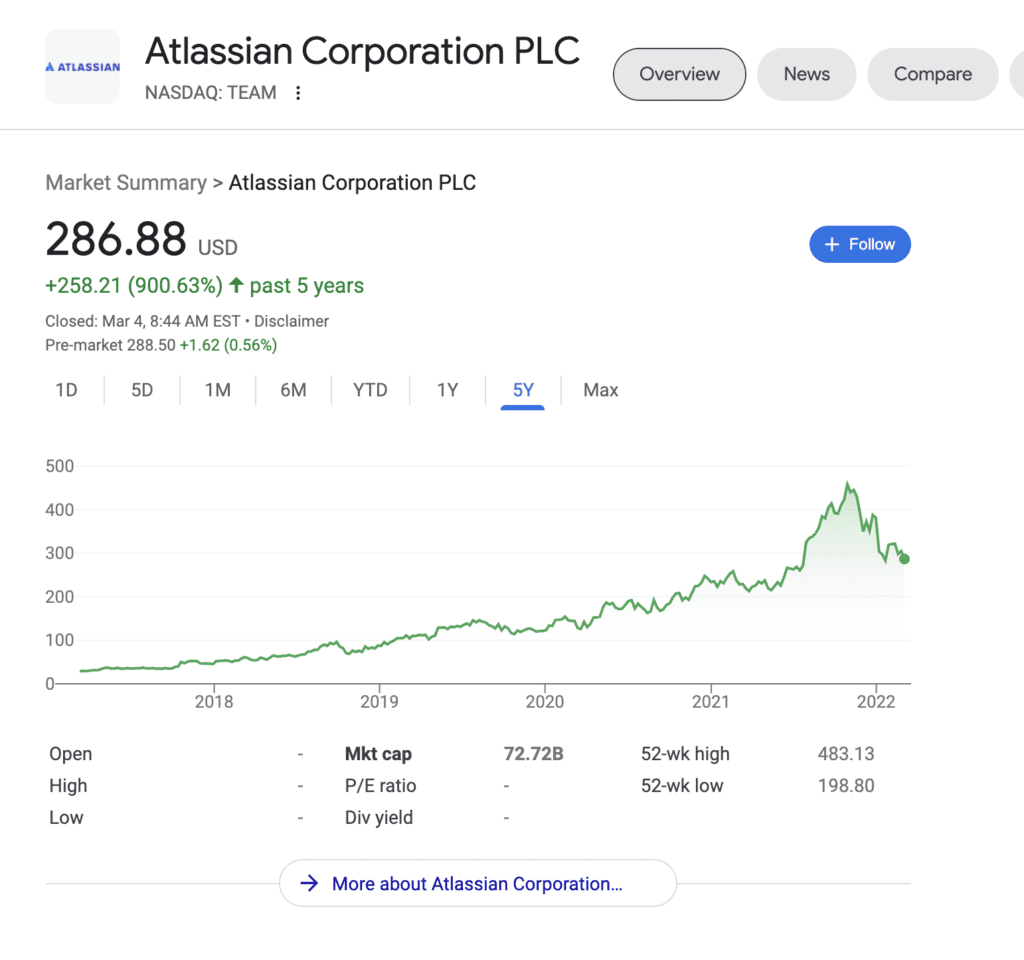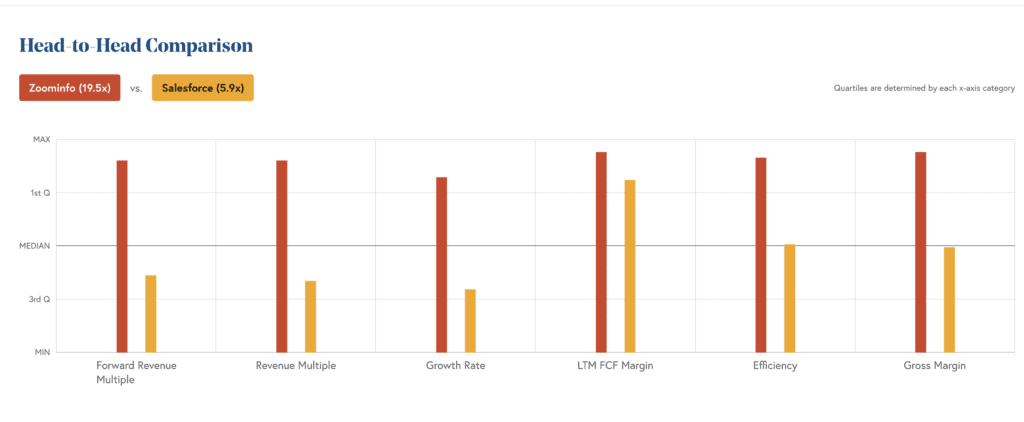At the 2022 SaaStr Miami Super Meet-up the other day, Salesloft CEO Kyle Porter pointed out an interesting statistic from the recent Vista SaaS CEO conference:
Public SaaS companies that are hyper sales efficient haven’t been hit nearly as hard, if at all, compared to those that are less efficient.
Take a look at ZoomInfo, Bill.com, and Atlassian for example. All three are hyper-efficient. ZoomInfo has barely had its market cap hit by the recent tumult, still trading at a healthy and well-deserved $20B+ market cap:
And ZoomInfo is wildly efficient. It has 39% operating margins! More on that here.
Bill.com has also held up well at a $22B market cap. It’s similarly has had a very efficient word-of-mouth and expansion model:
And for another example, see Atlassian at almost $3B ARR. Growth is strong, but not Snowflake crazy fast (100%+). But its almost sales-free model remains highly efficient, and its stock has held up well in the tumult at a $74B market cap. Down from their 2021 high, but well ahead of where the stock was pre-pandemic:
Another way to see this is to compare the acquisition efficiency of stocks that have held up better (ZoomInfo) vs those that have hit record growth numbers but aren’t quite as efficient (e.g., Salesforce). You can do this pretty easily at the BVP site here:
There are likely many root causes of the current tumult in SaaS stocks, from rising interest rates to things just getting a bit frothy in 2021, to changes in post-pandemic buying patterns.
But sales efficiency does seem to be back in fashion again in SaaS, after no one seemed to care all that much for a while. SaaS stocks that aren’t that efficient just haven’t held up nearly as well as the efficient ones, even where they’ve experienced torrid growth.
Worth keeping an eye on, and at the margin, perhaps just making sure your CLTV/CAC and Magic Number math make sense. And that, perhaps, you have a path to cash-flow positivity and higher operating margins a bit earlier than planned.





